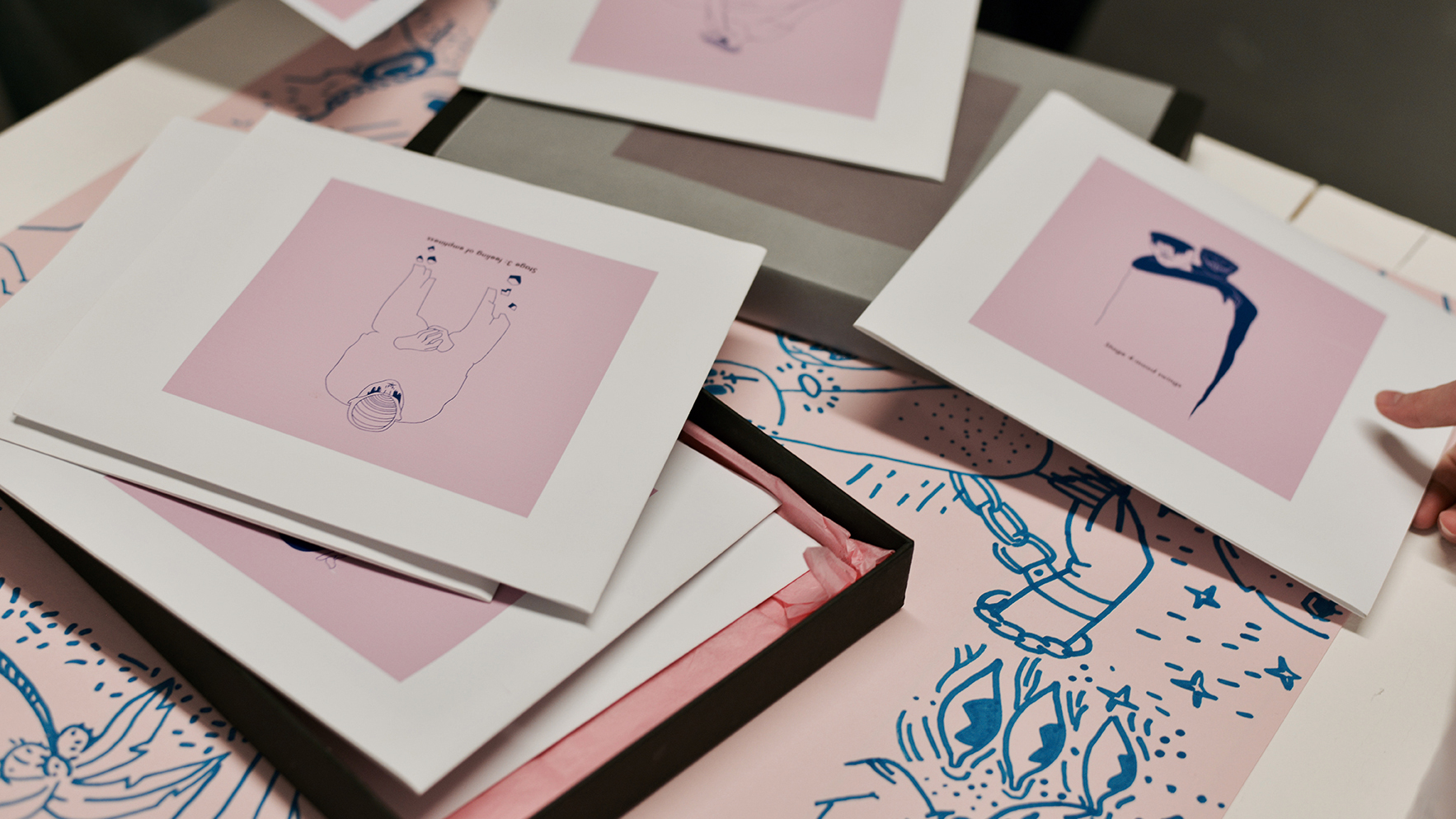Get ahead of the game as a first-year design student

So you’re kicking off your first year at design college. Congratulations, this could be the start of a flourishing creative career – if you play your cards right. Design education in the UK is facing a crisis, with a drop of about 14,000 applicants for art and design courses between 2016 and 2017, according to UCAS.
But there are still tens of thousands of design students competing against you for attention, so it really does pay to put the effort in to ensure you stand out and start creating a design portfolio you can be proud of. At the end of it, you may even be named as one of the best graduates of your year.
Here are nine sure-fire ways to stay ahead of the curve from day one.
01. Build a studio bookshelf

No doubt your course will provide a reading list to help you grasp the fundamentals of good design. This kind of theory is crucial, but it’s not everything.
Take the time to build your own studio bookshelf to dip into for reference and inspiration: this list of 5 must-read books for design students includes some great insights into the design process.
02. Explore some new skills

Design studios are increasingly looking for multi-disciplinary, versatile creatives to hire. Don’t rely on your course to give you all the skills you need: be proactive, experiment, and give yourself an edge.
Codecademy is a great starting point for learning to code, for instance, and there are some great free Udemy courses for designers on the basics of animation, 3D, WordPress and more.
Daily design news, reviews, how-tos and more, as picked by the editors.
03. Get smart with money

Whether you plan to make a living as a freelancer, work your way through the ranks of an agency or even start your own studio, you’ll need to get your head round the financial side of things.
Take advantage of every opportunity you have to hone your budget management skills, whether through organising the weekly food shop or getting involved with a student society, and you’ll be on the front foot.
04. Fill your sketchbook
Sure, you’ll need to show your working for your course projects as they develop. But a good sketchbook should be about more than that: use it as a place to record and evolve all manner of ideas as they occur to you.
Get into the habit of thinking conceptually, and turning random sources of inspiration into something more constructive. Who knows, that quick thumbnail sketch could be perfect for a brief further down the line.
05. Maintain your portfolio

For many third-year students, the last few months leading up to the final degree show and graduation is a chaotic frenzy, pulling together the best portfolio possible in the time available.
Once you’re in the world of work, maintaining your folio will be just one more item on a never-ending to-do list. So use any spare time you have available while studying to craft, develop and maintain it as you go.
06. Start a passion project
One of the best ways to bulk out that portfolio with the work you really want to do, as well as creating a distinctive calling card, is to set your own briefs.
Many creative pros indulge their passions and develop their style through personal experiments and creative side projects alongside client work, and as a student there really is no better time to get into the habit. Perhaps it could spark off a fruitful collaboration with a fellow student who you end up founding a studio with down the line.
07. Build up your contacts

They say it’s who you know, not what you know. While a lucky few might have a contacts book started already thanks to friends and family, when it comes to setting up those all-important placements and internships, it pays if you’ve been proactive during your design school years.
Go to design events, festivals and talks, ask questions, get yourself out there early and you never know where it could lead.
08. Freelance while studying

Once you’ve found a style, developed a fledgling portfolio packed with passion projects to supplement your coursework, honed your skills and built up your contacts book, it’s time to start thinking commercially.
Don’t be afraid to pitch your skills before you graduate: you may get some knock-backs, but as with all of the above, start early and reap the benefits.
Main illustration: Camelia Pham for Computer Arts.
Read more:

Nick has worked with world-class agencies including Wolff Olins, Taxi Studio and Vault49 on brand storytelling, tone of voice and verbal strategy for global brands such as Virgin, TikTok, and Bite Back 2030. Nick launched the Brand Impact Awards in 2013 while editor of Computer Arts, and remains chair of judges. He's written for Creative Bloq on design and branding matters since the site's launch.
